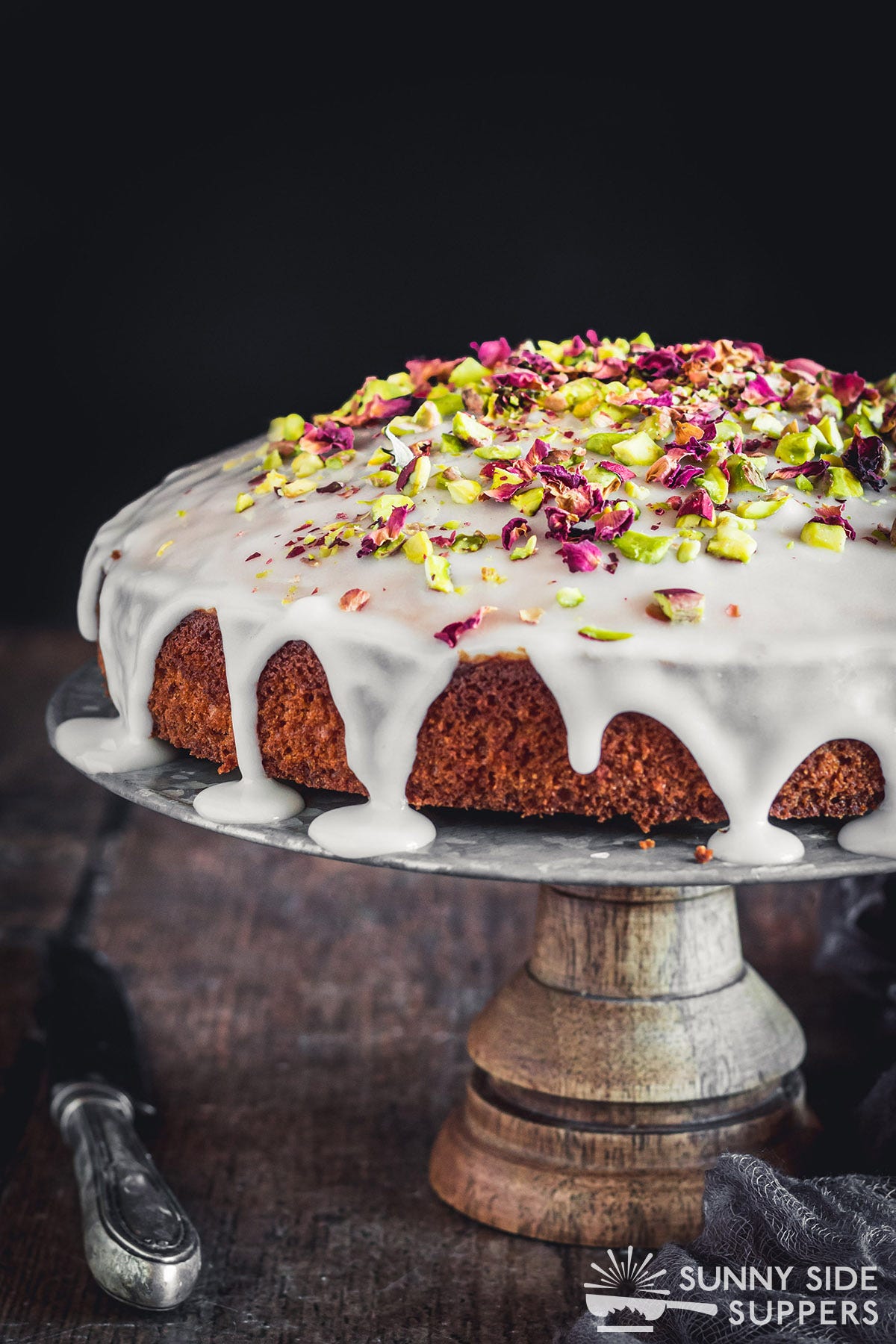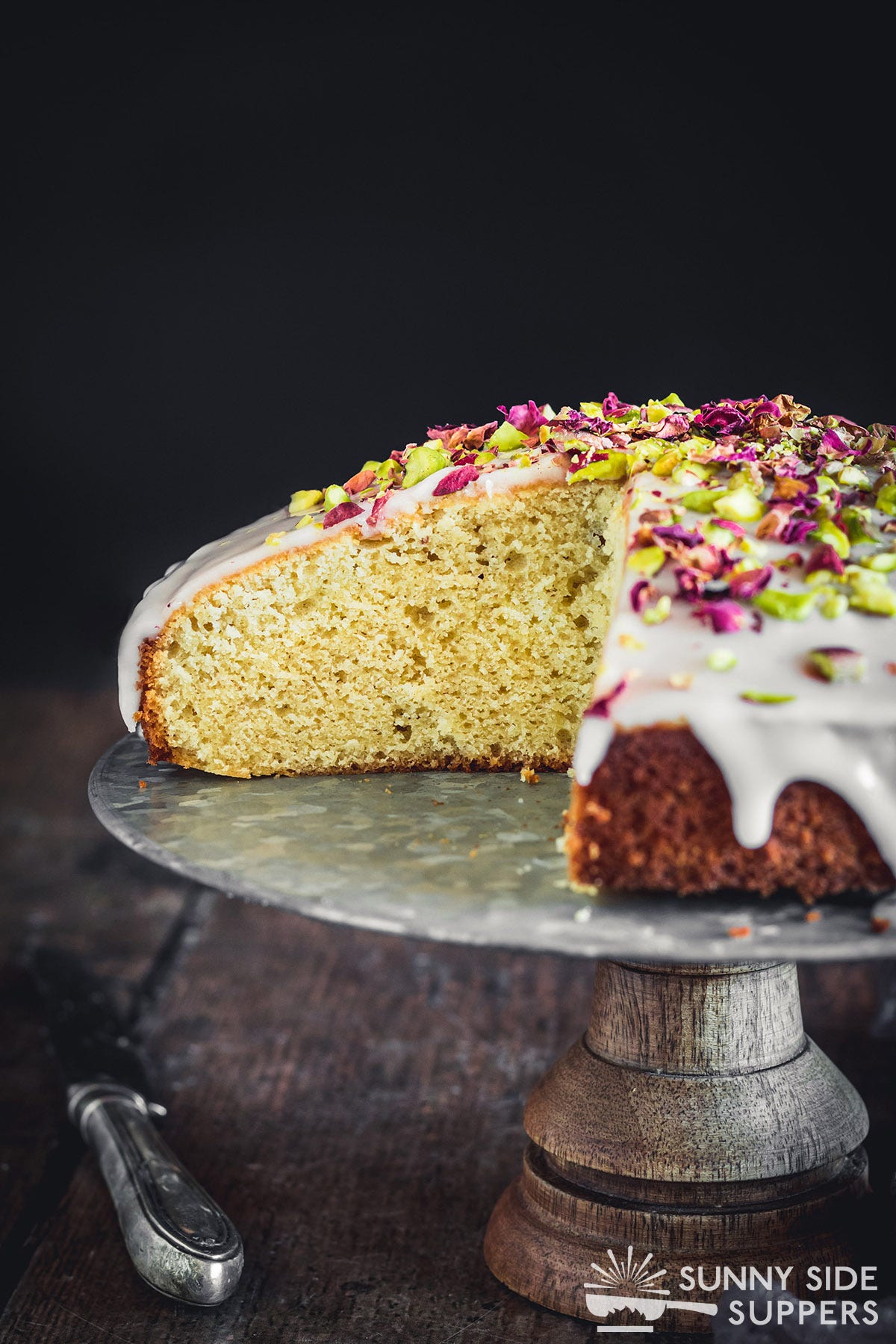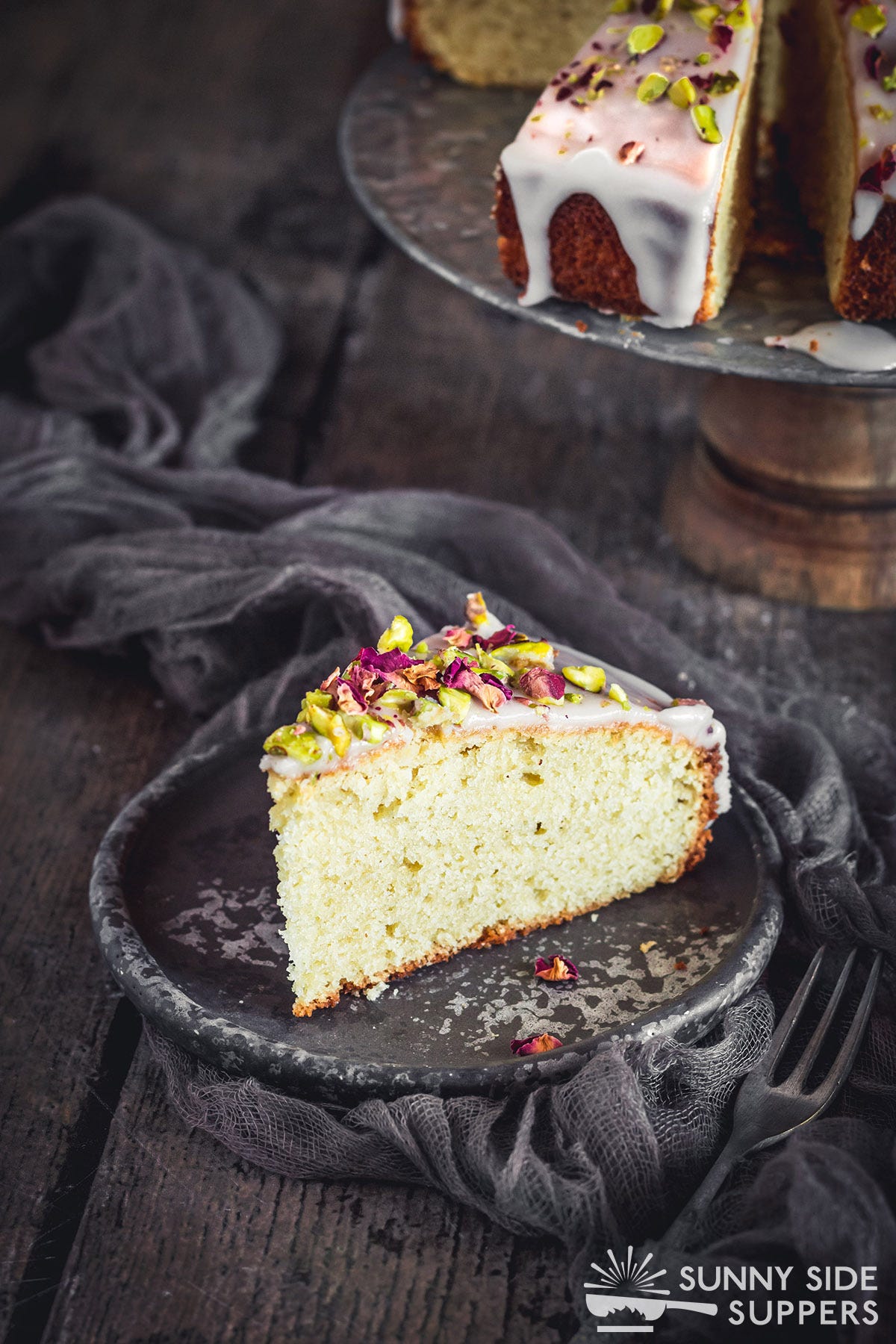Persian Love Cake
A moist and tender cardamom-rose cake with an enchanting list of "magical" ingredients to bespell your beloved.
This recipe originally appeared on my food blog, where it received rave reviews. It is now available exclusively on Substack for supporting members. Here’s what one reader had to say about this recipe:
This elegant Persian Love Cake is unlike anything you’ve had before. Flavored with rose water and vanilla, then both lemon and orange zest, this tender cake is a feast for the senses. To finish, we’ll drizzle rose icing on top then sprinkle the cake with edible flower petals and chopped pistachios.
What’s So Special About a Love Cake?
Varied textures. This cake is fluffy, moist and tender - especially if you use full-fat Greek yogurt as directed in the recipe. Rose icing, flower petals and chopped pistachios on top add a smooth layer of sweetness that’s complemented by a bit of crunch.
Fragrant. Culinary-grade rose water lends a floral fragrance to this cake that’s not something you commonly find in American kitchens. You can also use orange blossom water for a slightly different, yet equally delightful, variation.
Totally gorgeous. Dried rose petals (again, culinary grade) and chopped pistachios add beautiful shades of green and pink to the finished cake.
The stuff of legends. Literally. There is an entire fairy tale story behind the creation of the first love cake. (See below)
Why Is It Called a Persian Love Cake?
According to legend, the original version of this cake was developed centuries ago in Persia when a kitchen maid fell in love with a prince.
She desperately wanted the prince to return her affections. So, she decided to bake a cake for him. Not just any cake mind you, but one filled with magical ingredients that would compel him to adore her as much as she adored him.
In other words, she decided to make a “love potion” cake.
She consulted her local soothsayers, then headed to the kitchen, where she put her baking prowess to work. Gathering her ingredients, she created a cake spiced with cardamom, citrus, and rose water. Then she decorated it with rose water icing and sprinkled bright green pistachios on top. For good measure, she added dried rose petals, which were known to be a symbol of love.
And then? She fed this cake to her beloved. He took one bite and forgot every other woman he had ever loved. They married, she became a princess, and I assume they lived happily ever after.
I have no idea how true this legend is, but let’s just say it’s legit because it makes it more fun to eat this cake if there’s a centuries-old romantic story attached to it.
(The name “Persian Love Cake” is a recent invention, by the way, coined by Iranian cookbook author Yasmin Khan.)
What’s So Magical About the Ingredients?
Why did the prince in the story fall in love with the woman who baked him this cake? If folk magic has any say, it all comes down to the ingredients.
As it turns out, the components of a Persian Love Cake are full of magical qualities. I researched them when I first developed this recipe years ago, and I’ll share what I uncovered just for fun. 😉
Cardamom (Eloquence and Charm) – According to folklore, cardamom can help you be more charming and eloquent.
Rose (Passion / Protection) – A classic symbol of love, even in our modern society! In ancient cultures, roses were associated with the gods of love and often used in love spells. Rose petals were also thought to be charms against the “evil eye.” So if your intended was, oh, a prince, and other ladies would be jealous of your relationship, the rose petals would protect you from their jealousy.
Lemon (Happiness) – Often used in love spells and said to encourage happiness thanks to its bright and cheerful color.
Orange (Love/Marriage) – Thought by some to summon love and encourage wedded bliss. When eaten at the end of a meal, an orange symbolizes a happy and sweet life.
Almonds (Luck/Love) – Almonds are thought to attract luck and at one time were used in hand-fasting (marriage) rituals to encourage a lasting union.
Pistachios (To Break Old Attachments?) – I’m not sure why these were used, because in ancient Middle Eastern cultures pistachios were thought to free you from a love spell when you broke open the shells. Perhaps there was someone else the prince loved and the baker wanted to break that spell first? Ooo, I sense a spicy backstory.








